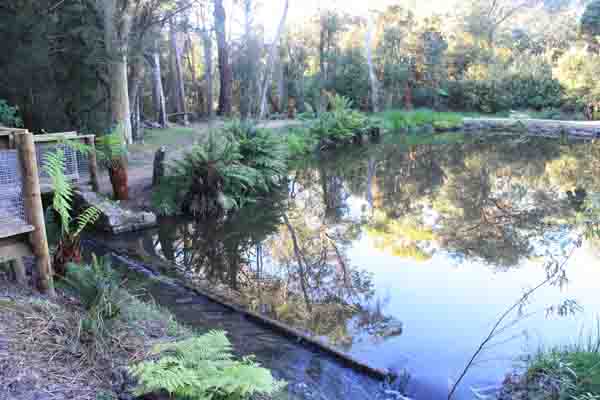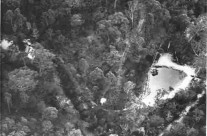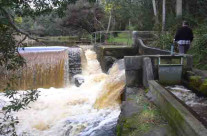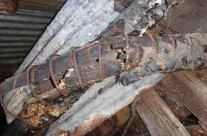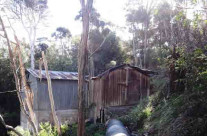The dam and weir system on the Brid River was a key part of Bridport’s first modern water supply. The official opening was on March 26, 1938. From the dam the water flowed through the concrete race running alongside the river. The race was built during the 1930’s with no reinforcing. The water ran down the race to the old pump house and turbine. The pump house was around 3 metres above the river level which gave sufficient fall to drive the turbine.
→By the early 1950s it gradually became clear that the system needed upgrading as Bridport continued to grow. The pump was often broken down and many attempts were made to repair it. Water supplies were inconsistent and not able to deal with growing demand. A new motor was installed in 1952 with only limited success. By the 1960’s a new pump house was installed near the Elizabeth street entrance. This is still being used today.
→The pipes that carried the water were constructed of wood staves, wrapped in heavy gauge steel coil, and then covered in creosote soaked canvas. Throughout the 1920s, local residents had agitated for an up to date water supply and holiday makers had long complained about poor facilities. Water had been a scarce commodity in Bridport particularly during summer. Tanks would often run dry and water was carted from above the tidal flow further down the Brid River.
→Originally the water was pumped some 3000 ft or around 900 metres to the reservoir at the top of the town with no running costs. The reservoir is about 270 feet or about 80 metres above the river. The scheme covered an area from just south of the river along to the old pier. It also included taps along the foreshore, the recreation ground, (village green) and the public hall.
→In 1962 the settling pond was dug just a few hundred metres downstream from the weir. The water was diverted before it travelled down the race to the fish farm. The gravel and sand would drop to the bottom and the water was reasonably clear. A screen was installed to catch rubbish to stop it going down the race.

